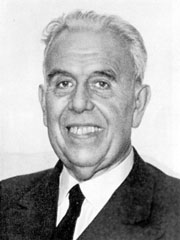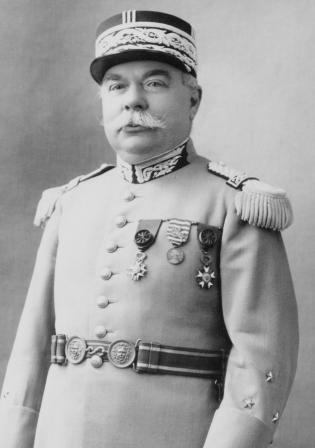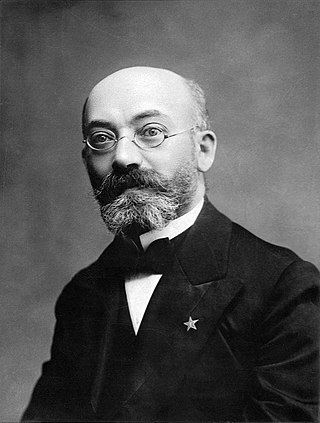
Esperanto is the world's most widely spoken constructed international auxiliary language. Created by L. L. Zamenhof in 1887, it is intended to be a universal second language for international communication, or "the international language". Zamenhof first described the language in Dr. Esperanto's International Language, which he published under the pseudonym Doktoro Esperanto. Early adopters of the language liked the name Esperanto and soon used it to describe his language. The word esperanto translates into English as "one who hopes".

Esperantujo or Esperantio is the community of speakers of the Esperanto language and their culture, as well as the places and institutions where the language is used. The term is used "as if it were a country."

L. L. Zamenhof developed Esperanto in the 1870s and '80s. Unua Libro, the first print discussion of the language, appeared in 1887. The number of Esperanto speakers have increased gradually since then, without much support from governments and international organizations. Its use has, in some instances, been outlawed or otherwise suppressed.

The Universal Esperanto Association, also known as the World Esperanto Association, is the largest international organization of Esperanto speakers, with 5,501 individual members in 121 countries and 9,215 through national associations in 214 countries. In addition to individual members, 70 national Esperanto organizations are affiliated with UEA. Its current president is Prof. Duncan Charters. The magazine Esperanto is the main publication to inform UEA members about everything happening in the Esperanto community.
Norvega Esperantista Ligo was founded in 1911. As the Norwegian arm of the Esperanto movement, its aim is to spread knowledge and use of the international language Esperanto. The league has a modest size of a couple of hundred members, and work done within NEL is mostly voluntary. The youth wing of NEL is Norvega Junularo Esperantista.
The Baháʼí Esperanto League (BEL) is the official organization of Baháʼís who are Esperantists. It was founded on 19 March 1973 with the approval of the Universal House of Justice.

Lidia Zamenhof was a Jewish Polish writer, publisher, translator and the youngest daughter of Klara (Silbernik) and L. L. Zamenhof, the creator of Esperanto. She was an active promoter of Esperanto as well as of Homaranismo, a form of religious humanism first defined by her father.

Edmond Privat was a Francophone Swiss Esperantist. A historian, university professor, author, journalist and peace activist, he was a graduate of the University of Geneva and a lecturer for the World Peace Foundation. His collective works consist of original dramas, poems, stories, textbooks and books about the Esperanto movement.

Hector Hodler was a Swiss Esperantist who had a strong influence on the early Esperanto movement.
The stelo was from 1945 to 1993 a monetary unit of Esperantists, one of whose aims was to achieve a single world currency. Attempts at an earlier currency, the speso, were cut short by the First World War. For a time the Universal League, part of the Esperanto movement, issued coupons and coins denominated in steloj, making attempts to link the Stelo to existing currencies on the basis of relative purchasing power in different countries.
Rüdiger Eichholz, was a Canadian physicist and Esperantist and a member of the Esperanto Academy. He is best known for publishing the "Esperanto picture dictionary" (1988) and a massive anthology co-edited with his wife, Esperanto in the Modern World (1982).

Louis Marie Jules Charles Bastien was a French Esperantist and a quartermaster in the French army. In 1899 he married Marguerite Pfulb (1879–1941); the couple had three daughters and two sons. In school he learned mathematics, classical French literature, Latin and Greek and learned to compose Latin verse. After a year of preparatory studies at l'Ecole Sainte-Geneviève in Versailles he entered l'Ecole Polytechnique in 1887 at the age of 17. Not having the maturity of his older classmates, he did not excel in his studies and, on graduation in 1889, had to content himself with a military career.
Hans Jakob Notz was a German-born Swiss Esperantist. His real name was Franz.
Ino Kolbe, born Ino Voigt, was a German Esperantist and author.

The World Esperantist Vegetarian Association is a voluntary association of Esperanto-speaking vegetarians. Founded in 1908, the group's working language is Esperanto, and it is the oldest international organization of vegetarians that is currently active. TEVA published a journal, Vegetarano ("Vegetarian") from 1914 to 1932, revived in 2009 as Esperantista Vegetarano, and has also operated a spirited Internet mailing list through Yahoo! Groups since 2005.
The Esperanto League of Bosnia and Herzegovina is the national Esperanto association in Bosnia and Herzegovina, which represents Esperanto speakers, Esperanto societies, and friends. Since its establishment in 1910, it helps advancement of Esperanto language learning and usage in Bosnia and Herzegovina.

Esperanto was constructed in Poland by L. L. Zamenhof. It maintained a notable presence in Poland until the Occupation of Poland during World War II and the subsequent Communist rule resulted in the persecution of Esperantists.

Austria has been the home of Esperanto speakers for most of the language's history. Esperantists were persecuted by the Nazis during the annexation of Austria in the 1930s. The President of Austria from 1965 to 1974, Franz Jonas, was an Esperantist. The Esperanto Museum and Collection of Planned Languages is located in Vienna.

Esperanto has been used in the Czech Republic since the 19th century. It was suppressed by the Nazi and Communist governments of the 20th century before being revived in 1969. The Czech Republic is home to the Esperanto Museum in Svitavy.











